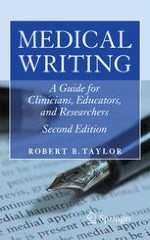2011 | Boek
Over dit boek
The first edition of this book (titled “The Clinician’s Guide to Medical Writing”) has become a standard in its field and remains an indispensible reference for any clinician, academic physician, or health professional who wishes to hone their writing skills. However, since its publication in 2004, significant changes have taken place in the way medical professionals communicate with each other and the world. Medical Writing: A Guide for Clinicians and Academicians, 2e retains all of the fundamental writing advice of the first edition and has been expanded to include two brand new chapters:
How to Write a Research Protocol (including why a research project needs a written protocol, elements of the research protocol and common problems)
How to Write a Grant Proposal (including sections on government and private grant funding sources, what you need to know about grant writing, and elements of a successful grant proposal)
New information is also included throughout the book on becoming a successful writer, medical tables and figures, conflict of interest and disclosures, how to review a scientific article, statistical analysis, “pay-to-publish” journal publishing, electronic submission of manuscripts, issues in medical publishing and the future of medical writing and publication. New appendices address commonly encountered research and statistical terms and memorable aphorisms regarding writing, medical and otherwise.
